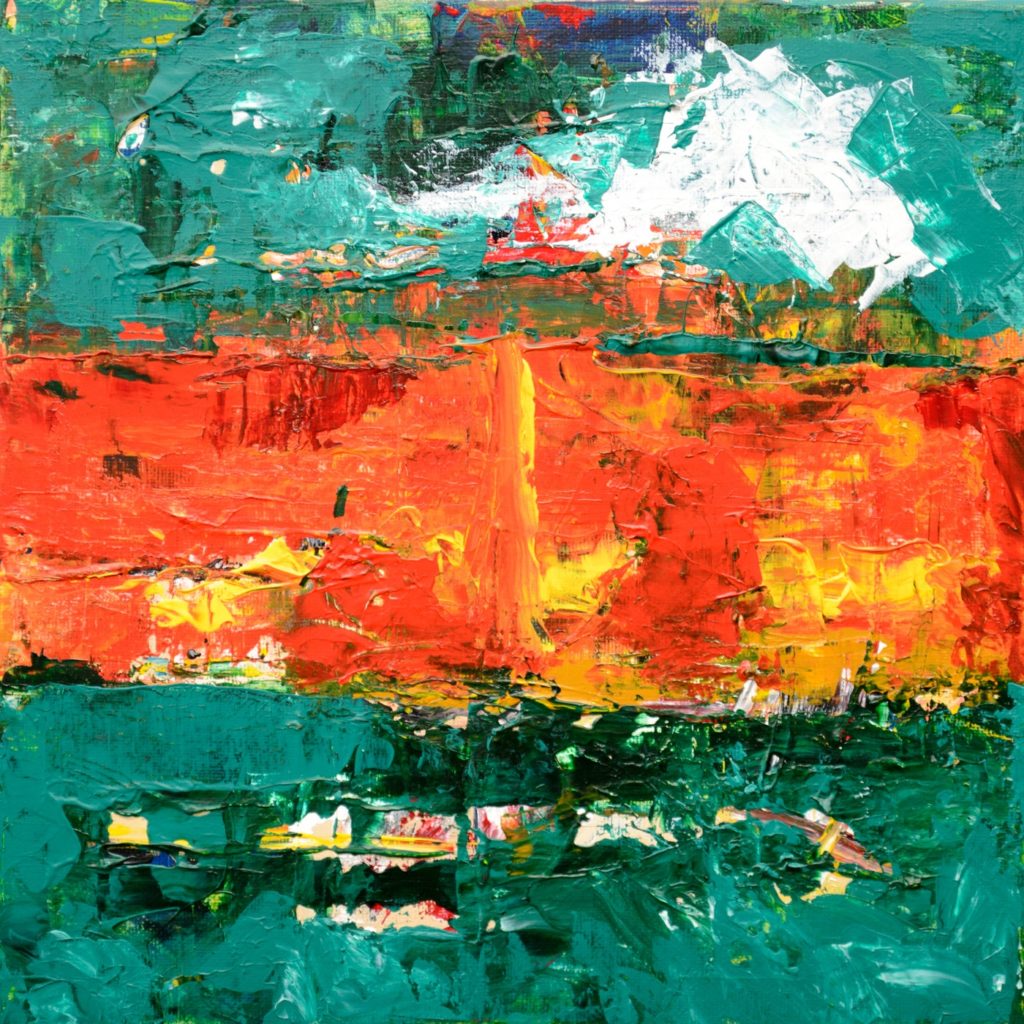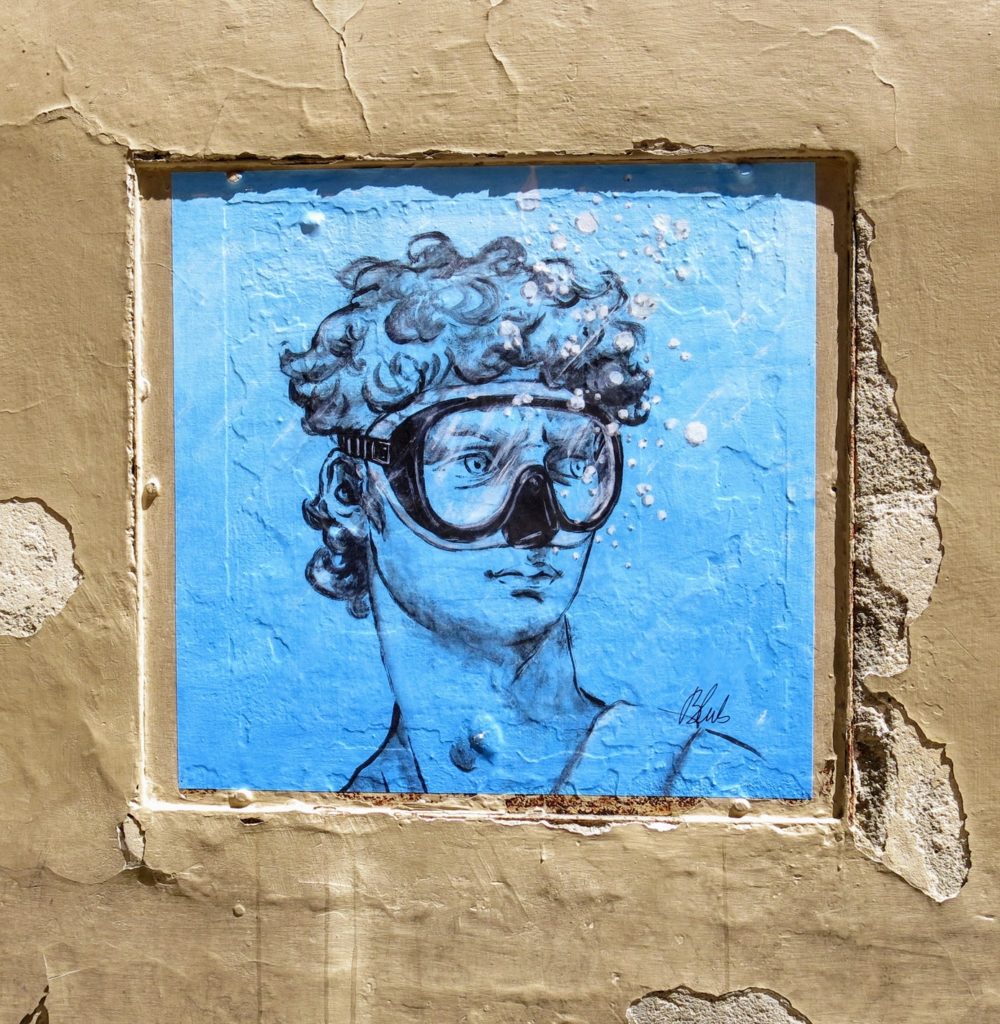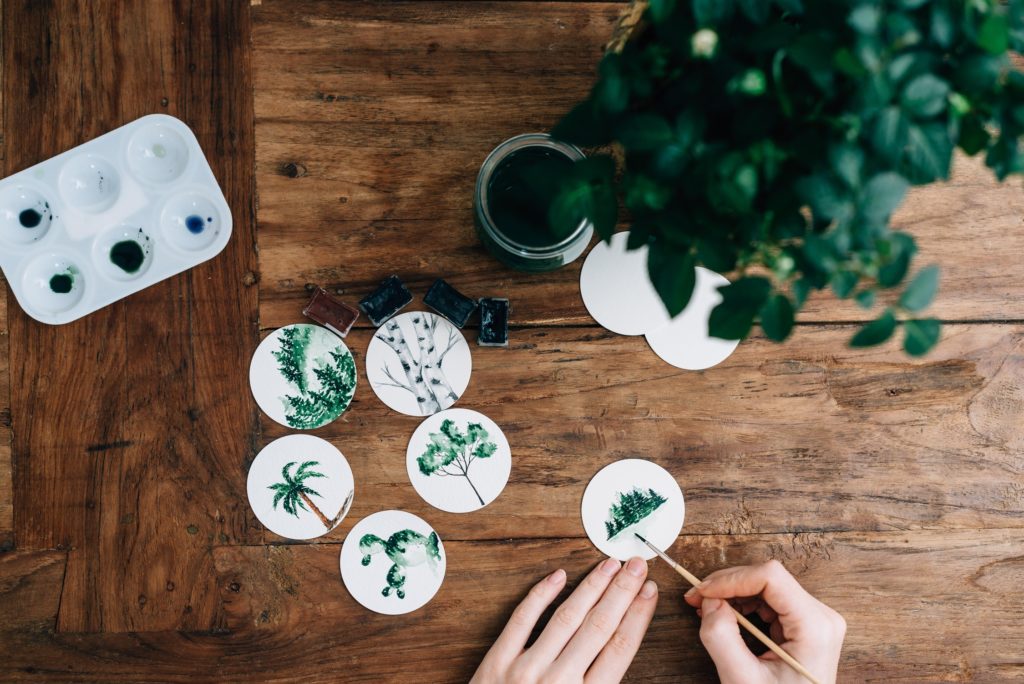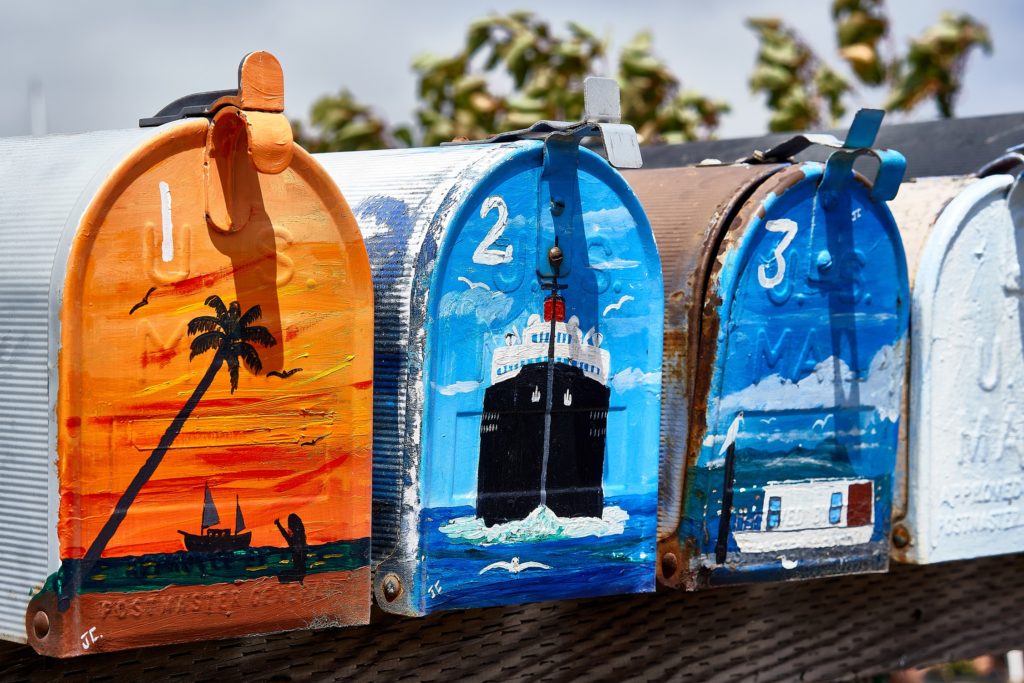The first thing you need to begin painting with your acrylic paints is, most definitely, a surface.

Unlike sketches which are done only on paper, acrylic paints are much more flexible in terms of surfaces they can be painted on. Hence, there are a number of choices you have when it comes to painting surfaces for acrylic paints. Today, we’ll walk you through a variety of them.
The major surfaces you can expect to see include hardwood, hardboard, canvas, watercolor paper, and metal surfaces. Other materials include masonite and plastic. You can also use fibreboard of varying densities for the same task, but generally Medium Density Fibreboard [MDF] is used.
We’ll go over some details of each of the materials listed above so that you can easily understand the pros and cons and then take the right call as per your preferences.
Let’s begin with the first material at hand!
Painting Surfaces For Acrylics

Image via Steve Johnson@steve_j
Canvas is arguably the most common material used to paint with acrylic colors. It is easy to handle, very accessible, and easy to transport. This also makes it an ideal choice for larger paintings. The only way to determine how two kinds of fibers are different is to check the fibers. Cotton comes in at the bottom rung, while the most expensive ones move towards linen.
The other parameter you should have in mind is weight. Heavier the canvas, the better it is.
Canvas is available in two variants: Canvas Board and Stretch Canvas. Canvas board is the one that’s more readily available, but are of lower quality. Canvas board gets quite slippery over time, too. You can get over this initial slipperiness in two ways: Either you use a surfactant or you can use acrylic gesso to prime the surface and getting that satin smooth finish.
Stretch canvas, on the other hand, is pulled over a wooden frame. The canvas works best when primed with acrylic gesso, and is available in a number of levels of thickness based on your particular requirements.

-
Hardwood Panels
The hardwood panels have been popular among the artist crowd for hundreds of years now. Typically, hardwoods such as oak, mahogany, birch, and walnut have been used. These have a unique advantage, in that they last for a number of years - much longer compared to any kind of canvas. The typical disadvantage is that they end up being much heavier than canvas or others.
Do keep in mind the fact that hardwood panels can be expensive to use and to maintain, unlike canvas - hence, as a student or a hobbyist, you’re best off using a canvas. There are some brands which offer cheap birch wood, but these cheaper brands are prone to get warped and split with time.
If you’re knowledgeable about woodwork, it helps a lot - you can work with unused wooden panels which would otherwise be wasted in this context. You would be especially lucky if you find some that are lying around in garage sales or your own garage. These can turn out to be a very value-for-money proposition if the panel gets some care post-painting.
-
Medium-Density Fibreboard [MDF]
Medium density fibreboard is quite similar to masonite in nature. Most artists wouldn’t even know the difference between the two materials - but the proof is in the pudding. MDF manufacturing processes employ similar methods when compared to masonite, but the difference comes when the disintegrated wood fibers are combined with resin binder and wax.
Masonite is safer than MDF, because the resin used in the MDF manufacturing process contains formaldehyde which can very well seep out into the atmosphere if somehow the board gets cut. Chances of inhaling formaldehyde, then, increase significantly. That has been the case so far - safer alternatives are coming to the market, but it doesn’t hurt to take precautions nevertheless.
MDF is not as dense as masonite, but it is denser than plywood and panels made of particle wood. Although not as dense, it is thicker than masonite, which is just ⅛” to ¼” thick. For artists looking for a thicker range of support, MDF is arguably the better option. In conclusion, we’d recommend buying a respirator if you do somehow intend to cut into the fiberboard.

-
Hardboard Panels: Masonite
Coming to the safer, cheaper, but the admittedly less durable option - masonite comes in two forms, tempered or untempered. Untempered masonite is generally paired with acrylic paint because tempered masonite uses oil and acrylic paint, as we know, cannot adhere to oil at all.
You don’t generally need a primer for hardboard, but most artists go in for acrylic gesso.
Masonite gives you two distinct surfaces with different textures front and back. Masonite makes for a wonderful companion to any student or hobbyist acrylic painter, simply because it’s very cheap, and because of the durability masonite can provide. Coming back to the surfaces, the front surface is smooth and the back is rough but has a texture to it.
Masonite surfaces give you a wonderful value-for-money experience - and you can make it last much longer than canvas can, if you can keep it out of the termites’ way. The only possible problems with masonite hardboards are that that they may warp and bend over time. If you can put wood battening on the back and prime the sides, front and back, you’re all set.
Paper is a very versatile tool to be using with acrylic paint. If you can get your hands on archival paper of a sufficiently high quality, you’re bound to have a wonderful painting experience with acrylic paints. Certain manufacturers ship paper which is meant exclusively for acrylic paints, but you have more flexibility when it comes to choosing paper-based surfaces.
Acrylic Paper
This paper is meant exclusively for acrylic paints. It’s a thick card-like paper which comes in sheets or pads which support all kinds of acrylic paints. Generally, it’s a wise call to prime the paper surfaces front and back with acrylic gesso. This helps give a satin-like finish to the paper and preserves it for a long time to come.

Watercolor Paper
While it may not be immediately obvious, watercolor paper is a wonderful surface to be painted on using acrylic paints. There are two broad categories of watercolor paper: artists’ grade and students’ grade. As the name might suggest, the student grade paper is cheaper but not too high quality - perfect for the beginners. The professionals should stick to the other kind.
There are a number of watercolor paper varieties: handmade, mold made and machine made are prime examples. The students generally pick machine-made paper, while the artists stick to handmade paper. For those not quite willing to shell out enough for handmade but want to upgrade just the same - it’s best to go in for the mold-made paper.
There are also different textures available within watercolor papers, which are:
- Hot pressed texture. This texture is smooth, gives impressive flexibility for detailed artwork, but is equally difficult to control with the paintbrush.
- Cold pressed texture. This is somewhat harsher but is soft enough for your brush to flow over the surface.
- Rough. This surface has pronounced teeth, and the brush doesn’t really “flow” over the surface. Best only for washes.
If you’re considering different colors to paint on, you get the most flexibility when it comes to watercolor paper. The most popular colors remain white and cream, however. The manner in which light bounces off the paper surface is best observed in watercolor paper.
-
Metal
This is one of the more offbeat choices you can make when it comes to painting with acrylic paints. Granted, acrylic paint doesn’t quite stick to the smooth surface of a metal, but with a bit of sandpaper, the rough surface you get makes it an excellent choice for painting using acrylics. You absolutely cannot use the same gesso you use to prime other surfaces, however.
A good use case is to have metallic items such as cups, jugs, picture frames or painting frames, with a jagged and toothy finish using hard sandpaper and then paint designs and patterns on top of that sanded metal surface. The end result often comes out to be unique, and since a lot of people don't do this, this would be a truly rare creation.

The same logic stated for metals stands here, but you don't have to do too much to glass. You can get pre-sanded glass very easily - hence, you're best off with such glass surfaces. When sealing a glass project, the best option at hand is to use a polyurethane coating or varnish with a glossy finish.
The matte finish can wreak havoc on the glass surface, so avoid it as far as possible - your glass has a unique glistening effect. This would be compromised by a matte finish on top of it. Acrylic paints can be used on glasses, vases, bowls, mirrors, etc.
If you have never attempted painting glass, we highly recommend the experience, see our article on how to paint on glass here, you can also find inspiration on how to paint wine glasses here and a short review of the best paints to use for glass ornaments here..
-
Plastic
Again, a smooth surface is on our hands. But we take our trusty sandpaper and get to work on this, just enough to remove the smooth and shiny upper coating on the plastic. What remains is a somewhat toothy surface, good enough to be painted on by a number of acrylic paints. The acrylic paint adheres well in this case.
Further, sealing the paint once you're finished with painting will prevent flaking to occur on any work you do on the plastic surface. You can do ornaments for Christmas trees, giving the old lawn chairs a makeover or your brown and regular flower pots which could do with a little T&C.
Bringing it all together
In this edition of Acrylic Prepping 101, you've just gone through several of the best materials available on the market for pairing your acrylic paints with. Each material has its own traits and its own character, which shows in the end result of your craft. For the most general purpose use, we recommend going in for canvas or hardboard materials.
In other cases, you're free to go in for basically any material which will let acrylic paint stick to its surface for a long time include metal jugs, plastic items of regular use and glass panes which could do with some style thrown at it.
The options are endless when it comes to painting with acrylic colors - happy painting!
Read More on Acrylic Painting
5 of The Best Paint for Canvas Today
Painting Surfaces For Acrylics | Acrylic Prepping 101
Painting on Paper with Acrylics & 5 Paper-Like Surfaces to Consider
Acrylic Pour Painting [All You Need To Know]
20 Oil And Acrylic Painting Ideas For Enthusiastic Beginners
Learn The Basic Acrylic Painting Techniques for Beginners
22+ Delicate Beautiful Acrylic Painting Ideas To Try
Learn How to Use Acrylic Paint as Fabric Paint Right Now
Learn How to Thicken Acrylic Paint Correctly Right Now
Learn How to Clean Acrylic Paint Brushes Brilliantly
Learn How to Make Acrylic Paint in Your Studio
Learn How To Get Dried Acrylic Paint Out Of Brushes Successfully
Acrylic Painting Materials That You Really Need In The Studio
Learn How To Make An Acrylic Painting Waterproof Right Now
Acrylic Paint Thinner 101 | How to Thin Your Acrylic Paints Correctly
Best Cheap Acrylic Paints – Strength and Weakness of Brands Compared
8 Best Palettes For Acrylic Paint & How to Choose What You Need
Best Canvas for Acrylic Painting | Student & Artist Grade
13 Best Acrylic Paints for Beginners & Professionals Reviewed
10 Best Paper for Acrylic Paint
103 Best Acrylic Painting Ideas [Reviewed]
Best Acrylic Paint Brushes for Artists & Students Reviewed
